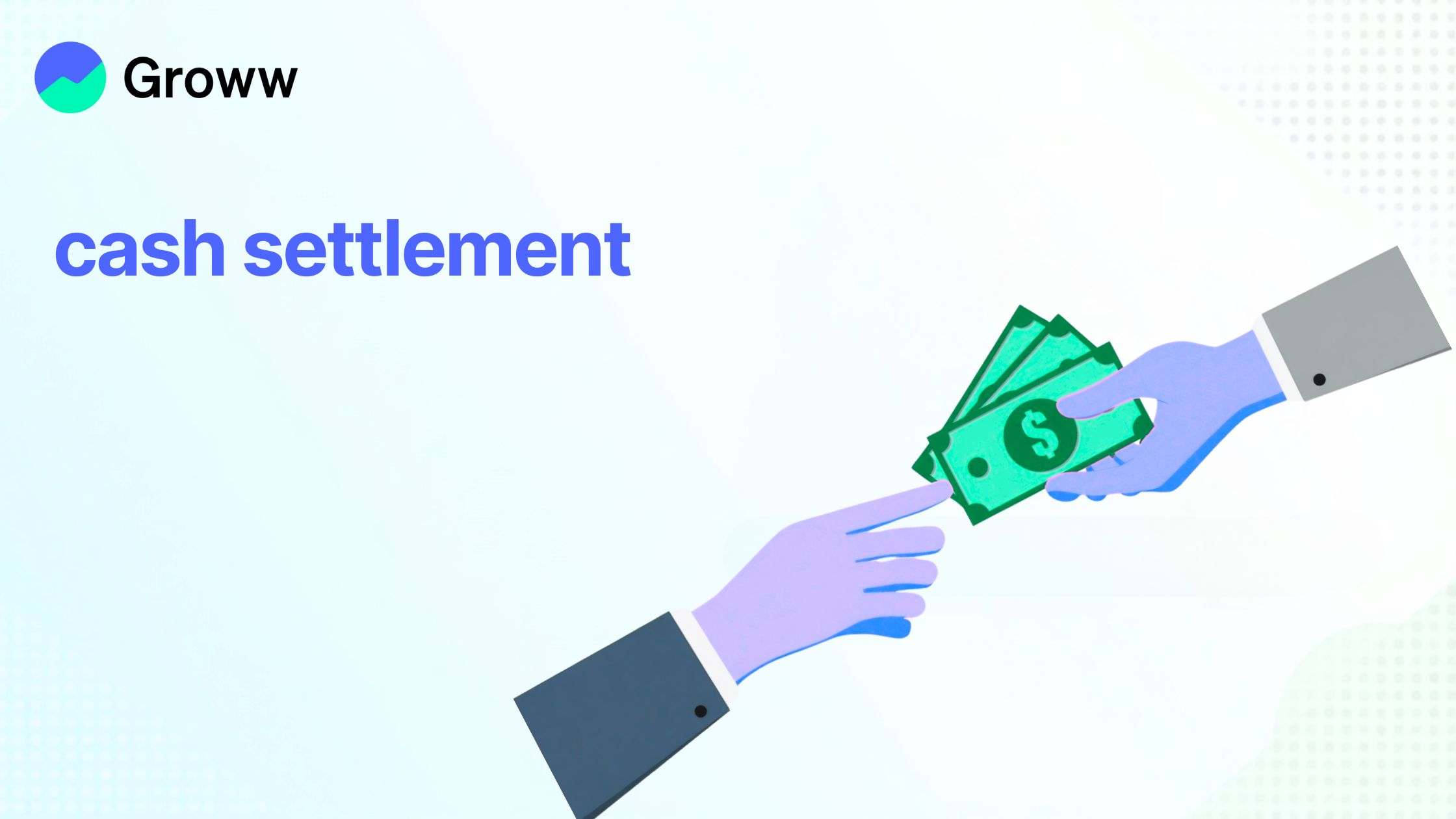What is Cash Settlement

If you have traded derivatives, you might know that a derivative contract has an expiry date. If a future or options contract expires or is exercised by the holder, the seller of the contract has the obligation to deliver the underlying asset. The physical delivery process of assets like stocks, indices, or commodities can be complicated and cumbersome. However, traders have a more efficient option to tackle this, known as cash settlement. In this article, we will understand what cash settlement is and how it is helpful for traders.
What is Cash Settlement?
Cash settlement refers to the process of settling a derivatives contract by paying the cash difference instead of the physical delivery of the underlying asset. When a derivative contract expires or is exercised, the seller of the financial instrument has to deliver the underlying asset. The process of physically delivering the underlying asset, like commodities, stocks, or indices, can be complicated and time-consuming. However, with the help of a cash settlement, the seller can settle the trade by paying the difference between the contract price and the market price instead of delivering the underlying asset.
Cash settlement is most commonly seen in commodity or index derivative contracts. Traders often use futures and options to trade an index or commodity. Instead of physical delivery, a trade can be settled more efficiently through a cash settlement.
How Does Cash Settlement Work?
To understand how cash settlement comes into play, we will look at a cash settlement example to get a better understanding.
Trader A decides to sell 10 grams of gold by going short on gold futures that are trading at ₹90,000 per 10 grams. Trader B anticipates the price of gold to increase and has bought futures contracts at the same price. Upon the expiry of the contract, the price of gold futures has increased to ₹95,000 per 10 grams. Now, Trader A has to deliver 100 grams of gold valued at ₹9,50,000 to settle the trade. However, through a cash settlement, the trade can be settled by paying the difference between the contract price and the current market price.
Contract Price: 90,000 x 10 = ₹9,00,000
Current Market Price: 95,000 x 10 = ₹9,50,000
Cash Difference: 9,50,000 – 9,00,000 = ₹50,000
By paying ₹50,000, Trader A can settle the trade. This allows Trader B to pocket the profit while Trader A avoids the need to physically deliver the gold.
Advantages of Cash Settlement
Now that we have understood how cash settlement works, let’s take a look at some of the key advantages of settling trades through this method.
- Cash settlement helps traders avoid the process of physical delivery. The process of settling trades is easy and convenient. It also supports buyers and sellers by keeping markets liquid.
- The cash settlement process makes it easier to calculate the profit and loss of a trade.
- Physical delivery can be time-consuming and complicated. Moreover, sourcing, transportation, storage, and delivery of commodities can be expensive.
- Cash settlement eliminates the risk involved with the physical delivery of assets, such as theft, damage, or forgery.
- A buyer benefits from cash settlement as there is no need to send the entire contract value, which reduces the transaction cost.
- In the case of stocks, a buyer does not need to take physical delivery of the stocks and sell them to realise a profit. Through cash settlement, a trader can easily and quickly settle the trade and reduce their risk exposure.
- Cash settlement increases transparency, reduces risk exposure, and capital requirements for both parties.
Also Read : Key Differences Between Cash Settlement and Physical Delivery
Where is Cash Settlement Used?
Cash settlement has several benefits, which is why it is commonly used for several assets and financial instruments.
Stock Index Futures and Options
While trading stocks or an index, traders often make use of derivative contracts. To settle these trades efficiently, cash settlement is a preferred option as it removes the need for the buyer to take delivery of the underlying asset and later sell it.
Commodity Derivatives
Traders typically use derivative contracts to trade commodities. With the help of cash settlement, traders can settle trades without having the need to physically deliver the commodities. This helps traders save money and time.
Mutual Fund Redemptions
Mutual fund redemptions have a settlement cycle within which the trades are settled. When an investor redeems his mutual fund units, he receives a cash payout for the units redeemed. These redemptions are settled through the cash settlement process.
Corporate Actions
When a company takes a corporate action that involves a buyback of shares, it settles the trade through a cash settlement. Meanwhile, actions like a cash-only merger may result in a payout to the investors, which is done through a cash settlement.
Conclusion
Trading with the help of derivatives can be extremely helpful for traders. However, physical delivery of the underlying asset can pose severe challenges to the seller of the financial contract. To circumvent this, traders can settle trades through the cash settlement process. This process is beneficial to sellers as well as buyers. It makes the settlement process streamlined while reducing the associated risks of physical delivery.